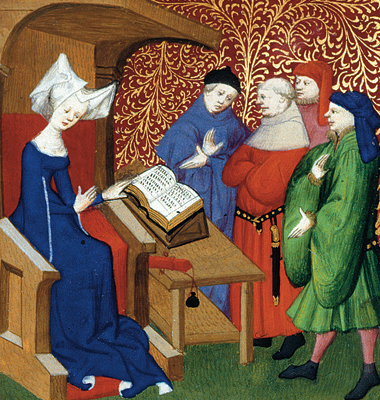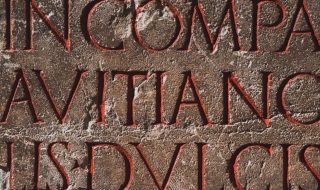
What do you think of when you think “medieval”? Women in pointy hats stuck in castles? Damsels in distress waiting to be rescued by knights in shining armour? Think again. Women have been awesome in every age. In Anglo-Saxon England, they had more power than women in the Victorian age.
Here are just a few of the fabulous women of the Middle Ages in Europe:
Abbess Hild (7th century): Hild was the head of one of the first big monasteries in England, at Whitby, a centre for religion, trade and learning. Hild’s reputation brought kings and scholars to consult her. She also discovered Caedmon, the first poet we know by name in the English language.
Aud the Deep-Minded (9th century): Up in the north the woman known as Auðr djúpúðga Ketilsdóttir helped settle Iceland. Although Norwegian, she traveled to the Hebrides after her Viking husband’s death, then to Orkney after her Viking son’s death, built a ship of her own, then sailed to Iceland to settle with a crew of twenty men. Her nickname came from her legendary wisdom. In the Laxdæla Saga she’s referred to as Unn.
Marie de France (12th century): One of the first women writers we know by name in the Middle Ages, Marie wrote in England for French-speaking nobles, most likely the court of Henry II and Eleanor of Aquitaine. She retold fables, Arthurian stories and various adventures like her werewolf story Bisclavret.
Eleanor of Aquitaine (12th century): One of the most amazing women of any time, Eleanor married the king of France and then the king of England, gave birth to two kings of England as well as queens of Castile and Sicily, went on the Second Crusade, owned the priciest piece of real estate in Europe at the time and had a major hand in starting the tradition of troubadours, who were the singer/songwriters of their time. There’s a quite good film on the later life of Eleanor called The Lion in Winter.
Christina of Markyate (12th century): Christina had visions of living a religious life, but her parents demanded she get married to a rich suitor. When she refused, they called on the bishop, who tried persuasion and then violence, but clever Christina managed to elude him. She fled on horseback, disguised as a man, and hid with a hermit Roger for years until she could live openly in her own convent, dispensing wisdom and holy visions.
Christine de Pisan (14-15th century): Christine was the first woman to earn her writing with her pen (or rather, quill). Widowed at twenty-five with three children, she worked hard and carved out a career with dogged determination. She believed that the virulent misogyny of her time, showcased in volumes like The Romance of the Rose, needed a public argument. Her The Book of the City of the Ladies showed how women from all walks of life could cultivate all the best and useful qualities, and that stereotypes about women could only exist because they did not have a voice. Christine gave them a voice in her dozens of manuscripts.
Julian of Norwich (14-15th century): Julian was an anchoress, which meant she was walled up in the side of a church. It seems a strange idea now, but for a time it was a popular way to spend your life in quiet contemplation. She had a series of visions, collected as The Revelations of Divine Love, which envisioned Jesus as a mother and led her to conclude, “And all shall be well, and all shall be well and all manner of thing shall be well.”
Margery Kempe (15th century): Margery was a true original. She wanted to be religious, but not to live in a convent or be walled up in a church like Julian (though she visited Julian to get her approval). Her primary way of showing her faith was in loud sobbing as she contemplated the image of the crucifixion. This made her very unpopular! One of her fellow pilgrims on the way to Jerusalem said, “I wish you were in a boat at the bottom of the ocean.” Yet The Book of Margery Kempe is the first autobiography we have of a person who was not a king or a pope, but a common person.
For more on fantastic medieval women, visit your local library or the Medieval Women Interactive Exploration and various other sites on the internet.
[From a compendium of Christine de Pizan’s works commissioned in 1413, produced by her scriptorium in Paris. Photograph: (c)The British Library Board. Harley 4431, f.259v.]
Dr. Laity is Associate Professor of English at the College of Saint Rose in New York and currently lives in Dundee. She also writes novels, stories, and plays as well as writing about medieval literature and culture.




This is far to glib, I think patronising is the word.
Is this for adults or very young children?
All these women struggled enormously with male opposition and bias, please stop insulting our intelligence..
If you’d taken a moment to look at the rest of the site, you would see that Jump! Mag is aimed at children. This isn’t meant as an in-depth article on women of the middle-ages, but as a short introduction to some amazing women, who many kids will not have heard of. We welcome comments on our articles, but request that the tone is kept civil, as our main readers are young people between the age of 8 and 12 years.